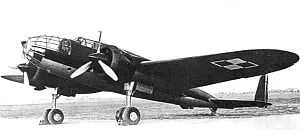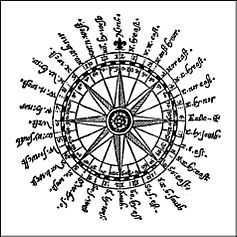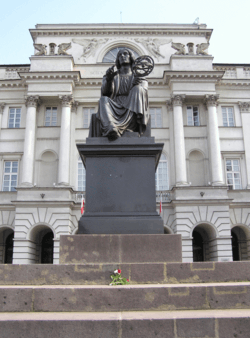Timeline of Polish science and technology
Education has been of prime interest to Poland's rulers since the early 12th century. The catalog of the library of the Cathedral Chapter in Kraków dating from 1110 shows that Polish scholars already then had access to western European literature. In 1364, King Kazimierz the Great founded the Cracow Academy, which would become one of the great universities of Europe. The list of famous scientists in Poland begins in earnest with the polymath Nicolaus Copernicus, who studied there.
In 1773 King Stanisław August Poniatowski established the Commission of National Education, the world's first ministry of education.
After the third partition of Poland, in 1795, no Polish state existed. The 19th and 20th centuries saw many Polish scientists working abroad. The greatest was Maria Skłodowska-Curie, a physicist and chemist living in France. Another noteworthy one was Ignacy Domeyko, a geologist and mineralogist who worked in Chile.
In the first half of the 20th century, Poland was a flourishing center of mathematics. Outstanding Polish mathematicians formed the Lwów School of Mathematics (with Stefan Banach, Hugo Steinhaus, Stanisław Ulam) and Warsaw School of Mathematics (with Alfred Tarski, Kazimierz Kuratowski, Wacław Sierpiński). The events of World War II pushed many of them into exile. Such was the case of Benoît Mandelbrot, whose family left Poland when he was still a child. An alumnus of the Warsaw School of Mathematics was Antoni Zygmund, one of the shapers of 20th-century mathematical analysis.
Today Poland has over 100 institutions of post-secondary education — technical, medical, economic, as well as 500 universities — which are located in most major cities such as Gdańsk, Kraków, Lublin, Łódź, Poznań, Rzeszów and Warsaw. They employ over 61,000 scientists and scholars. Another 300 research and development institutes are home to some 10,000 researchers. There are, in addition, a number of smaller laboratories. All together, these institutions support some 91,000 scientists and scholars.
Timeline
1951 - the present

- Poland to Join the European Southern Observatory ESO (2014), 16-nation intergovernmental research organisation for astronomy.[1]
- PW-Sat - the first Polish satellite launched into space (2012)
- Graphene acquisition - In 2011 the Institute of Electronic Materials Technology and Department of Physics, Warsaw University announced a joint development of acquisition technology of large pieces of graphene with the best quality so far.[2] In April the same year, Polish scientists with support from the Polish Ministry of Economy began the procedure for granting a patent to their discovery around the world.[3]
- Blue laser - first blue laser in Poland (third in the world)
- Artificial heart - an implant, program: "Polish Artificial Heart"
- PSR 1257+12 - a pulsar located 2,630 light years from Earth. It is believed to be orbited by at least four planets. These were the first extrasolar planets ever discovered (by a Polish astronomer, Aleksander Wolszczan, in 1992). Polish astronomy has traditionally been among the best in the world.
- OGLE (since 1992)
- Foundation For Polish Science - a non-governmental organisation aiming at supporting academics with high potential - since (1991)
- PZL W-3 Sokół - a helicopter, FAA certificate in (1989)
- PZL Kania - a helicopter, first prototype (1979), FAR-29 certificate (early 1980s)
- Odra (computer) - a line of computers manufactured in Wrocław (1959/1960)
- K-202- first Polish microcomputer invented by Jacek Karpiński (1971)
- Polish Polar Station, Hornsund - since (1957)
- PZL SW-4 Puszczyk - a Polish light single-engine multipurpose helicopter manufactured by PZL Swidnik
- EP-09 - 'B0B0' Polish electric locomotive class
- PT-91 - a Polish main battle tank. Designed at the Research and Development Centre of Mechanical Systems OBRUM (Ośrodek Badawczo-Rozwojowy Urządzeń Mechanicznych) in Gliwice
- Grom (missile) - an anti-aircraft missile
- 206FM - class minesweeper (NATO: "Krogulec")
- Meteor (rocket)- a series of sounding rockets (1963)
- PZL TS-11 Iskra - a jet trainer aircraft, used by the air forces of Poland and India (1960)
- Lim-6 - attack aircraft (1955)
- The Polish Academy of Sciences, headquartered in Warsaw, was founded in 1952.
1901-1950
- Polish mine detector was a metal detector used for detecting land mines, developed during World War II (1941–42) by Polish Lieutenant Józef Stanisław Kozacki. It contributed substantially to British Field Marshal Bernard Montgomery's 1942 victory over German Field Marshal Erwin Rommel at El Alamein.
- Cryptologic bomb was a special-purpose machine designed in 1938 by Polish mathematician-cryptologist Marian Rejewski to speed the breaking of the Enigma machine ciphers that would be used by Nazi Germany in World War II. It was a forerunner of the "Bombes" that would be used by the British at Bletchley Park, and which would be a major element in the Allied Ultra program that may have decided the outcome of World War II.
- Biuro Szyfrów (Cipher Bureau) was the Polish military intelligence agency that made the first break (1932, just as Adolf Hitler was about to take power in Germany) into the German Enigma machine cipher that would be used by Nazi Germany through World War II, and kept reading Enigma ciphers at least until France's capitulation in June 1940.
- Czochralski process - a method of crystal growth used to obtain single crystals of semiconductors (e.g. silicon, germanium and gallium arsenide), metals (e.g. palladium, platinum, silver, gold) and salts (1916)
- Vickers Tank Periscope MK.IV - the first device to allow the tank commander to have a 360-degree view from his turret, invented by engineer Rudolf Gundlach (1936)
- Polish notation - also known as prefix notation, is a method of mathematical expression (1920)

- Reverse Polish notation - (RPN), also known as postfix notation (1920)
- Zygalski sheets, also known as "perforated sheets" (invented in 1938 by Henryk Zygalski), were one of a number of devices created by the Polish Cipher Bureau to facilitate the breaking of German Enigma ciphers.
- Stefan Banach - mathematician, Banach space, Banach algebra, Functional analysis
- Lwów School of Mathematics was a group of eminent Polish mathematicians that included Hugo Steinhaus, Stanisław Ulam, Mark Kac and many more.
- 7TP - light tank of the Second World War (1935)
- PZL.23 Karaś- light bomber and reconnaissance aircraft designed in the PZL (1934)

- PZL.37 Łoś - twin-engine medium bomber designed in the PZL by Jerzy Dąbrowski (mid-1930s)
- LWS-6 Żubr - initially a passenger plane. Since the Polish airline LOT bought Douglas DC-2 planes instead, the project was converted to a bomber aircraft (early-1930s)
- SS Sołdek - the first ship built in Poland after World War II (1948)

- Mieczysław Wolfke - "one of precursors in the development of holography" (said:Dennis Gabor)
- LWS - an abbreviation name used by Polish aircraft manufacturer Lubelska Wytwórnia Samolotów (1936–1939)
- PZL - an abbreviation name used by Polish aerospace manufacturers (1928–present)
- RWD - an abbreviation name used by Polish aircraft manufacturer (1920–1940)
- TKS - a tankette (1931)
- RWD-1 - sports plane of 1928, constructed by the RWD
- Marian SmoluchowskiPolish scientist, pioneer of statistical physics - *Einstein–Smoluchowski relation
1851-1900

- Maria Skłodowska-Curie - on December 26, 1898, Marie Curie announced the existence of a new substance, radium.
- Zygmunt Florenty Wróblewski and Karol Olszewski - the first to liquefy oxygen, nitrogen and carbon dioxide from the atmosphere in a stable state (not, as had been the case up to then, in a dynamic state in the transitional form as vapour) (1833)
- Ignacy Łukasiewicz - the first to distill clear kerosene from seep oil (1853)
- The Polish Academy of Learning, an academy of sciences, was founded in Kraków in 1872.
1801-1850
- Ignacy Domeyko - geologist and mineralogist, a geological map of Chile, describing the Jurassic rock formations, and discovered deposits of a rare mineral (1846)
- Paweł Edmund Strzelecki - nobleman, explorer, and geologist, wrote Physical Description of New South Wales (1845)
- Julian Ursyn Niemcewicz - scholar, poet, and statesman
1751-1800
- Commission of National Education (Polish: Komisja Edukacji Narodowej), founded in 1773, was the world's first national Ministry of Education.
- Stanisław Staszic was an outstanding Polish geologist, philosopher, poet and writer — almost a one-man academy of sciences. The Polish Academy of Sciences' Staszic Palace, in Warsaw, is named after him.
1601-1650

- Johannes Hevelius was an outstanding astronomer who published the earliest exact maps of the moon and the most complete star catalog of his time, containing 1,564 stars. In 1641 he built an observatory in his house.
- Jan Brożek (Ioannes Broscius) was the most prominent 17th-century Polish mathematician. Following his death, his collection of Nicolaus Copernicus' letters and documents, which he had borrowed 40 years earlier with the intent of writing a biography of Copernicus, was lost.
1551-1600

- Bartholomäus Keckermann - A Short Commentary on Navigation (the first one written in Poland)
- Josephus Struthius - published in 1555 Sphygmicae artis iam mille ducentos perditae et desideratae libri V. in which he described five types of pulse, the diagnostic meaning of those types, and the influence of body temperature and nervous system on pulse. This was one of books used by William Harvey in his works
1501-1550

- De Revolutionibus Orbium Coelestium (On the Revolution of the Heavenly Spheres). Nicolaus Copernicus began writing De Revolutionibus in 1506, and finished in 1530.
- Nicolaus Copernicus was a true Renaissance polymath — an astronomer, mathematician, physician, lawyer, clergyman, governor, diplomat, military leader, classics scholar and economist, who developed the heliocentric theory in a form detailed enough to make it scientifically useful, and described "Gresham's Law" the year (1519) that Thomas Gresham was born.
1351-1400
- Kraków Academy (Akademia Krakowska) founded in 1364 by King Kazimierz the Great.
1251-1300
- Witelo (ca. 1230 – ca. 1314) was an outstanding philosopher and a scientist who specialized in optics. His famous optical treatise, Perspectiva, which drew on the Arabic Book of Optics by Alhazen, was unique in Latin literature and helped give rise to Roger Bacon's best work. In addition to optics, Witelo's treatise made important contributions to the psychology of visual perception.
See also
- List of Poles
References
- ↑ "Poland to Join the European Southern Observatory". www.eso.org/. European Southern Observatory. Retrieved 29 October 2014.
- ↑ "Polish scientists to patent graphene mass-production technology". Graphene Times. 2011-04-22. Retrieved 2012-05-13.
- ↑ "Polish team claims leap for wonder material graphene". Phys.org. Retrieved 2012-05-13.